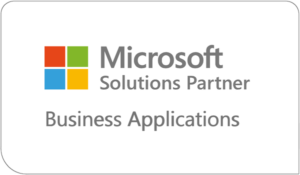Power BI is part of a larger constant of Business Intelligence products created by Microsoft, which include:
Azure Data Services
Azure Data Services enables users to quickly build intuitive apps with AI built-in, using a range of tools, technologies, and deployment options.
Machine Learning Server
Microsoft Machine Learning Server is a flexible service for analysing large amounts of data, creating AI-powered apps, and surfacing insights using scalable enterprise grade Python and R programming languages.
Analytics Platform System
Microsoft Analytics Platform System is a data platform built to store and analyse all your data with high performance, concurrency, and simplicity. The service offers users extensive data integration, super-fast query processing, scalable storage, and easy-to-use maintenance tools through SQL Server Parallel Data Warehouse.
SQL Server
SQL Server is Microsoft’s relational database management system, used to store and manage data in large quantities in rows and columns, comparable to a spreadsheet. SQL Server uses SQL, a standardised programming language, organise and retrieve data as requested by other applications. The most recent versions of SQL Server include features like performance tuning, real-time analytics, and data visualisation.
Power BI is part of what Microsoft called its Power Platform. This group includes Power BI, PowerApps, and Power Automate (formerly Microsoft Flow).
Powered by Microsoft Dataverse, PowerApps allows organisations to create their own responsive business applications with a citizen development experience. Application such as, employee engagement surveys, cost estimators, budget trackers, To-do lists, and booking apps can all be created for web and mobile without the need for coding knowledge or input from developers.
PowerApps’ drag-and-drop interface enables anyone to build and launch richly functional, professional apps without writing a single line of code. The apps easily integrate with Office 365 and Dynamics 365 to gather and utilise business data, and help win and engage customers.
A comparable service to PowerApps, Power Automate uses the same Microsoft Dataverse for Apps to help users build automated workflows that take care of repetitive administrative tasks.
There are already thousands of ready-made workflows—digital sequences that trigger predefined actions when certain activities occur—for users to take advantage of, from creating CRM leads when someone tweets a particular word or phrase, or tracking Outlook emails in an Excel spreadsheet, to sending an email to a group when a data alert is triggered in your analytics. These workflows can be used to connect your Microsoft services to third-party apps and programmes, without the need for complex custom integrations.
Is Power BI customisable?
Power BI is highly customisable, with users able to personalise dashboards and interfaces. Custom reports are also easy to create. Visualise data your way, with our rich library of fully customisable, open-source data visualisations. With the custom visuals SDK, you can create stunning visualisations, based on well-known JavaScript libraries such as D3, jQuery, and even R-language scripts. Test and debug on the fly, and package into redistributable custom visuals that can be used across all Power BI products. You can share custom visuals you’ve created within your organisation, deliver them to your clients and customers, or share them with the world on AppSource.
For more info on the power platform read Microsoft’s blog:


